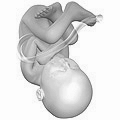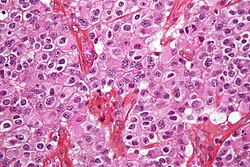Biotechnology is a field of applied biology that involves the use of living organisms and bioprocesses in engineering, technology, medicine and other fields requiring bioproducts.Biotechnology also utilizes these products for manufacturing purpose. Modern use of similar terms includes genetic engineering as well as cell- and tissue culture technologies. The concept encompasses a wide range of procedures (and history) for modifying living organisms according to human purposes - going back to domestication of animals, cultivation of plants, and "improvements" to these through breeding programs that employ artificial selection and hybridization. By comparison to biotechnology, bioengineering is generally thought of as a related field with its emphasis more on higher systems approaches (not necessarily altering or using biological materials directly) for interfacing with and utilizing living things. The United Nations Convention on Biological Diversity defines biotechnology as:[1]
"Any technological application that uses biological systems, living organisms, or derivatives thereof, to make or modify products or processes for specific use."
In other term "Application of scientific and technical advances in life science to develop commercial products" is biotechnology.
Biotechnology draws on the pure biological sciences (genetics, microbiology, animal cell culture, molecular biology, biochemistry, embryology, cell biology) and in many instances is also dependent on knowledge and methods from outside the sphere of biology (chemical engineering, bioprocess engineering, information technology, biorobotics). Conversely, modern biological sciences (including even concepts such as molecular ecology) are intimately entwined and dependent on the methods developed through biotechnology and what is commonly thought of as the life sciences industry.
 8:54 PM
8:54 PM
 kotesh
kotesh














